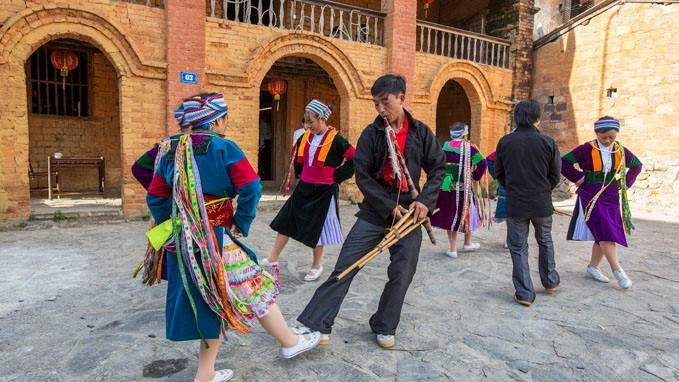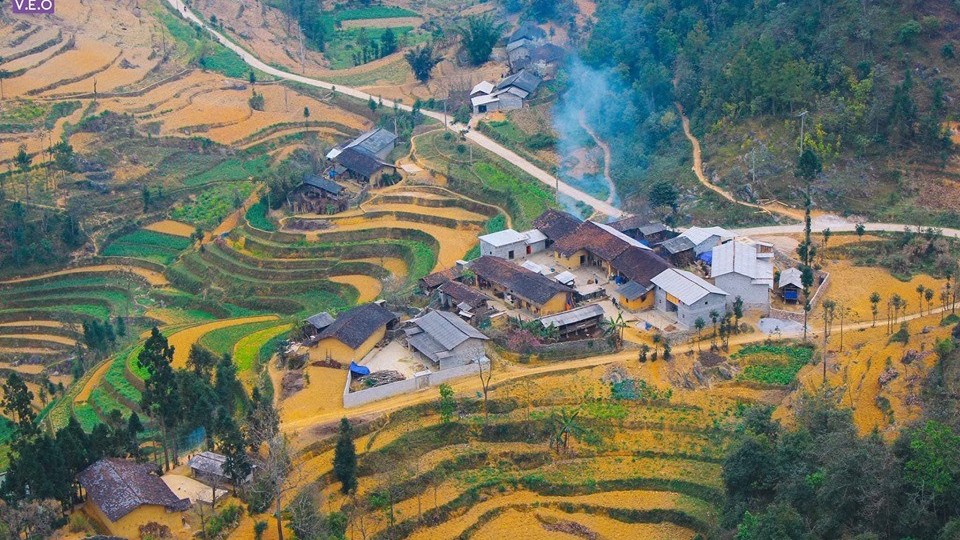
Magnificent Ha Giang in buckwheat flower season
Latest
Tam giac mach (Buckwheat) is grown in various highland provinces in Northern Vietnam. However, in Ha Giang province, this flower is like a specialty of the homeland, becoming a source of inspiration for the journey to here.
 |
| Tourists check in with buckwheat flowers in Ha Giang. (Photo: Ha Anh) |
Through visiting Ha Giang in November, the time when buckwheat flowers are in full bloom in the province’s hilly areas, and passing by Ma Le, Pho Cao, Sung La, and Lung Cu Flag Tower, the pure colors of flowers are clearly present on hillsides, roads, mountain passes, and even thorny cliffs.
While Ha Giang has several lovely buckwheat flower gardens, the most well-known destination is still Lung Cam Cultural and Tourism Village (Sung La commune), located in the valley of the Dong Van stone plateau. The village is home to 70 households, mainly the Mong, Lo Lo, and Hoa, and is famous for being the backdrop for the movie “Pao’s Story”. In addition to seeing the flowers covering the vast hill, travelers can also visit ancient houses with traditional architecture as well as daily activities of the Mong people. Among them, “Pao’s house” was built in 1947, which is a popular rammed earth house in the rocky plateau, closed in four directions, in the middle is a front yard. The yard is also paved with stone, surrounded by typical flowers of the plateau, including plums, apricots, and peaches.
Another ideal destination to enjoy buckwheat flowers is Pho Bang town, Dong Van district, a place full of mystery of a yin-yang house with typical Chinese characteristics, well-known for its stretching rose gardens with the simple but wild beauty of the Northwest mountains and forests.
The origin of this flower begins with a legend: the rice fairy and corn fairy sowed seeds in the lower world and they were poured into the ravine. When corn and rice grew up, farmers harvested the seeds, using them as staples in order to take each day as it came. One year, the food ran out before the new crop and the local people had to wander in search of food.
And then, after a long time of searching, they discovered a strange fragrance in the ravine, which was from the purple flower that was puffed under the young-and-fresh triangular green leaves. They collected this flower’s nuts, finding out that they tasted as subtle as corn and rice. Since then, the name “tam giac mach” was born, with the meaning of the tree that was bounced from white rice, with triangular-shaped leaves.
Not only the beauty from enchanting flower fields, the “tam giac mach” tree is also used for many other useful purposes. Before the bloom phase, saplings (young trees) are often picked and used as a vegetable, which tastes faintly rusty at first but sweet later. People also use buckwheat stems and leaves to make medicines to treat diseases, such as stomach diseases, constipation, hypotension (low blood pressure), and hypoglycemia (low blood sugar).
 |
| Buckwheat flower garden in Lung Cam Cultural and Tourism Village. (Photo: Ha Anh) |
The province is also popular with buckwheat cake, which visually looks like a round sticky rice cake but has a typical brown color of the buckwheat seed. When eating, the cake has a nutty, sweet taste and special aroma. Besides, the seeds can be processed into delicious porridge suitable for warming the stomach during cold winter days.
Another unique way of processing is to roast the seeds on the open fire and enjoy, like enjoying roasted soy sauce seeds; or grind, transform them into a mixture from yogurt or fresh sugar-free milk that helps skin white and smooth.
Not being made entirely from buckwheat seeds, buckwheat wine is mixed with corn in a ratio of 1:2, then will be incubated with a special enamel and then cooked. The finished product is an extremely precious and delicious buckwheat wine, which is not as spicy as rice wine, not as sweet as ruou can (tube wine), but it is a blend of those two wines’ flavors.
| Tam giac mach (buckwheat) is a tree belonging to the bean family (Fabaceae), with the petals fused together to form a pyramid and seeds in the middle. The flowers’ color changes in each period, changing from pristine white at first to a shade of light pink, purple pink, then dark red, and finally black when perishing. |













